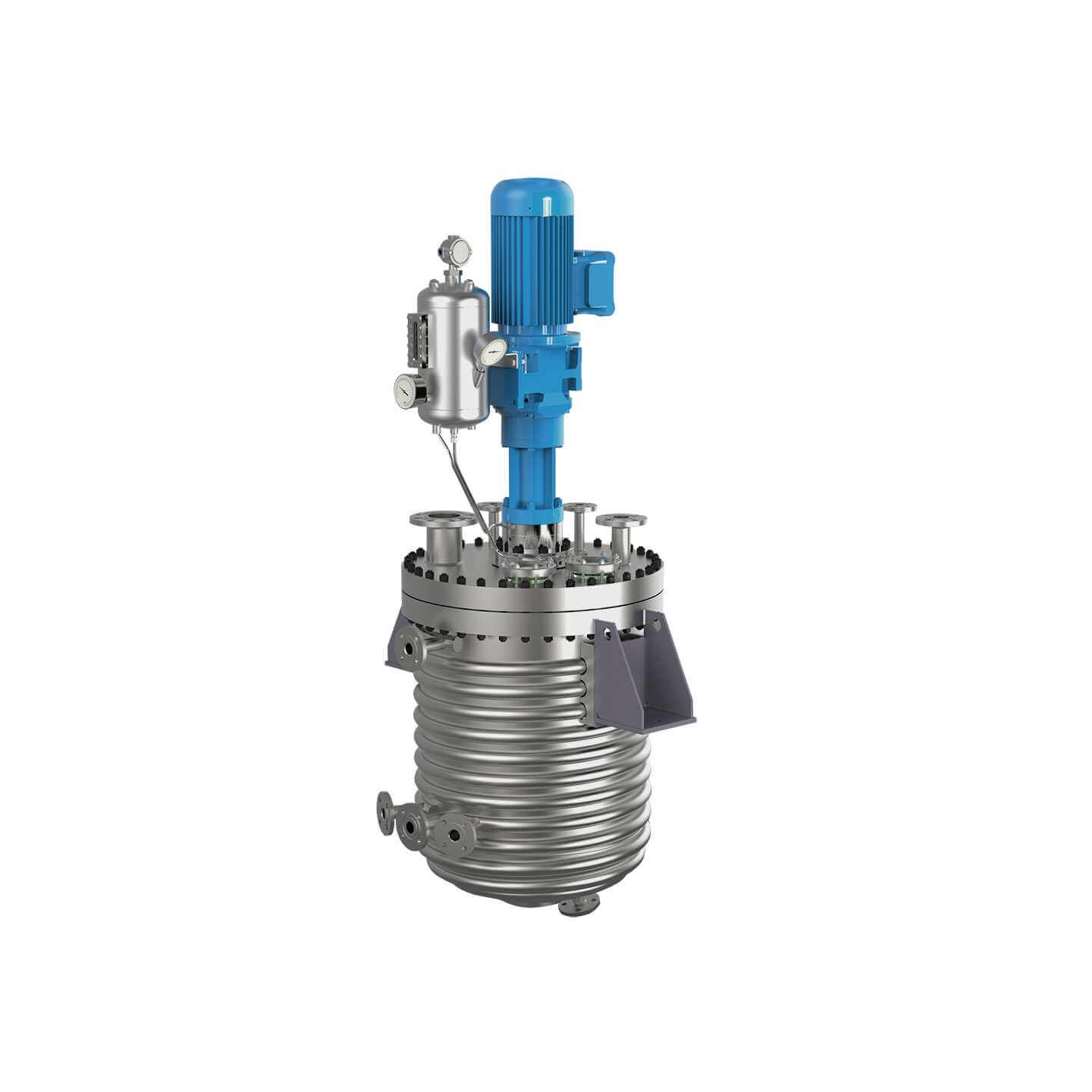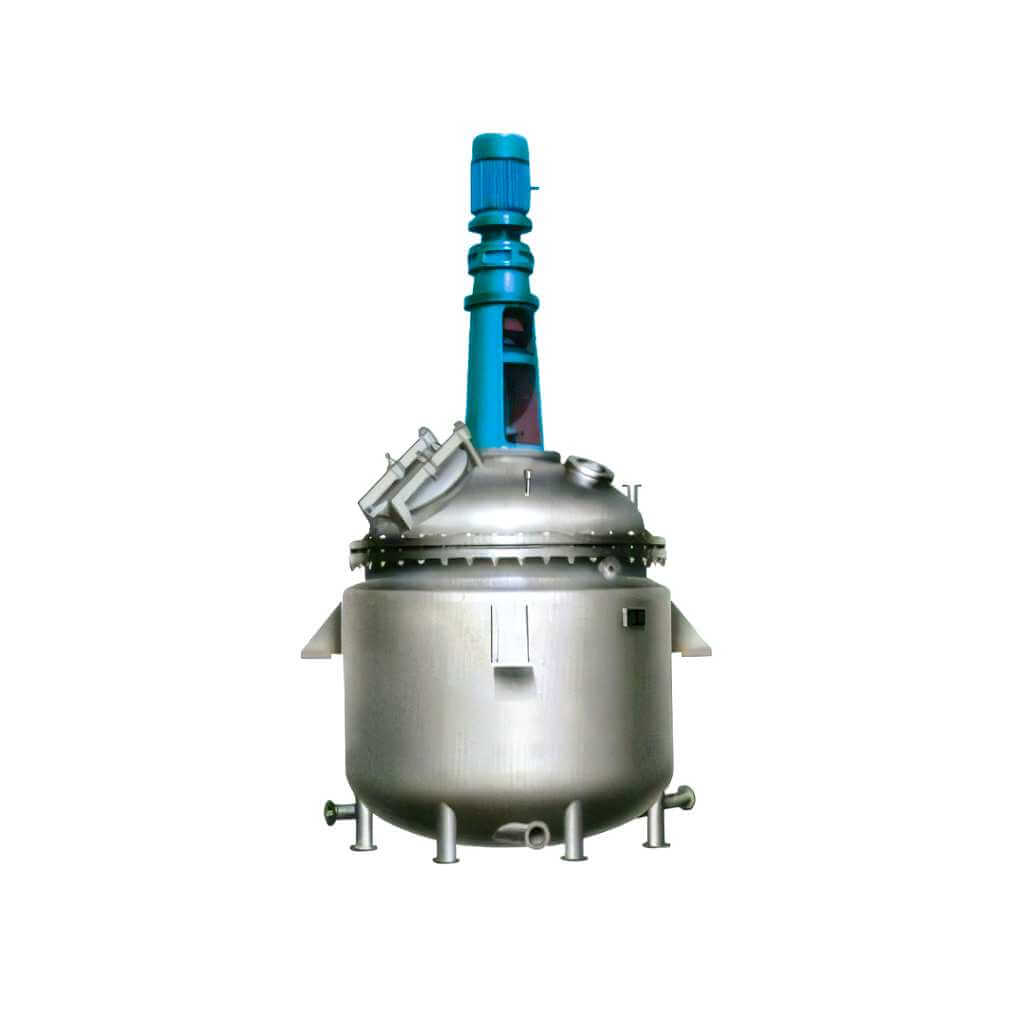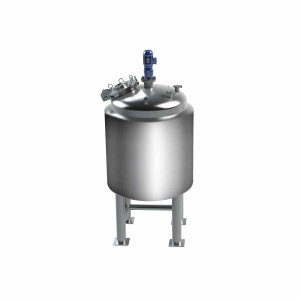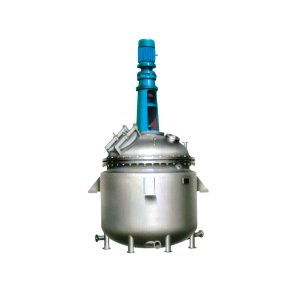The paddle blade jacketed reactor is mainly composed of a stirring vessel, a stirring device, a transmission device, a shaft seal device, a bracket, a manhole, process connections, and some accessories. The paddle blade jacketed reactor is divided into two parts: the tank and the jacket. It is mainly composed of a head and a cylinder. Most of them are medium and low-pressure pressure vessels. The stirring device consists of a stirrer and a stirring shaft, and its form is usually determined by the process design. The transmission device is a device that drives the mixing device and is mainly composed of a motor, a reducer, a linkage shaft, and a transmission shaft. Form a complete paddle blade jacketed reactor.
Composition of paddle blade jacketed reactor
The kettle body consists of a cylinder body, an upper cover, and a lower head. There are two ways to connect the upper cover and the cylinder. One is that the cover and the cylinder are directly welded together; the other is to consider the convenience of disassembly and use flange connection. The upper cover is equipped with manholes, hand holes, process nozzles, etc.
The stirring device of the paddle blade jacketed reactor
In the paddle blade jacketed reactor, to speed up the reaction speed, strengthen the mixing, and strengthen the mass transfer or heat transfer effect, etc., the paddle blade jacketed reactor is generally equipped with a stirring device. It consists of an agitator and agitator shaft, which are connected to the transmission device by a coupling.
Sealing device for paddle blade jacketed reactor
The sealing device used in the paddle blade jacketed reactor is a dynamic sealing structure, which mainly includes packing seals and mechanical seals. It consists of paddles, keys, collars, and vertical shafts. Blades are generally made of flat steel stainless steel or non-ferrous metals. The speed of the paddle mixer is relatively low, generally 20-80 r/min. The diameter of the paddle mixer is Di/3~2/3 of the inner diameter of the paddle blade jacketed reactor, and the paddles should not be too long. When the diameter of the paddle blade jacketed reactor is larger, two or more paddles can be used.
Main uses: Paddle blade jacketed reactor is suitable for liquid materials with high fluidity and low viscosity, as well as fibrous and crystalline dissolved liquids. When the material layer is very deep, several rows of paddles can be installed on the shaft of the paddle blade jacketed reactor. Folding-blade propellers consume less power and have lower operating costs than straight-blade propellers, so folding-blade propellers are more commonly used. Paddle mixers cannot be used for gas retention and micronization gas-liquid dispersion operations.



-19-300x300.jpg)


